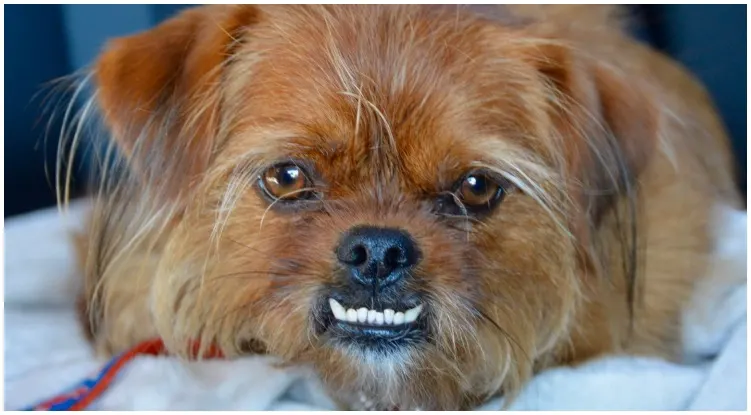Are you concerned that your dog may have an underbite? For numerous dog breeds, underbites are pretty common. But only in a few will they cause serious issues. This depends on the seriousness of the underbite, and a few other factors as well. Keep reading to find out more about underbite in dogs.
What is an Underbite Dog?
Underbites are common in a few dog breeds. An underbite is when teeth are not adjusted properly, causing the lower teeth to stick in front out of the upper row. Common cases of this are seen in the bulldog, who often has his bottom teeth sticking out of his lip. Underbites in pooches can extend from mild cases, requiring no procedures, to extreme cases, possibly requiring surgery.
Dog Breeds with Underbites
Any dog breed could develop an underbite. But it’s much more common in certain breeds. It’s most common in smaller dog breeds such as the Boston terrier, Pekingese, French bulldog, English bulldog, King Charles Spaniel, Pug, Lhasa Apso and Shih Tzu. Mixed dog breeds with one or two parent breeds from this list are also at risk.
Health Problems Associated with the Underbite dog
Underbites increase the risk for various health issues. Especially if you have a case of a more serious skeletal underbite. Dogs with serious underbites can have difficulty chewing and swallowing food. These conditions shouldn’t be to hard to spot.
What Causes Underbites in Dogs?
Underbites can be either skeletal or dental. Dental underbites happen when dogs have a normal facial skeletal structure, but his teeth aren’t correctly aligned. Skeletal underbites happen when the dog’s facial structure is abnormal. This results with the upper and lower rows of teeth to not align together.
Both dental and skeletal underbites are at least for one part due to the dog’s genetics. Problems during gestation or early development can also lead to underbites, as can injuries and infections in puppies.
Treatment
Jaw misalignments are usually hereditary. If a jaw misalignment leads to damage or pain in the mouth area of the affected animal, treatment becomes necessary.
The distinction between whether a malposition is hereditary or was acquired only after birth is only possible by examining all individual components of the denture and cannot always be determined safely in individual cases. A clarification may be possible by examining litter siblings or parent or Grandparent animals.
Depending on the individual case, the shortening of the affected teeth as well as the change of individual teeth or entire jaw parts are available as therapy options. Extraction of individual teeth can also be useful to avoid damage, but should be the last option, especially for fangs.
All of these treatments are pricey and invasive, so they should only be completed at the recommendation of your trusted veterinarian. In some cases, your vet will be able to do the work themselves but often they will refer you to an animal orthodontist or dental specialist.

